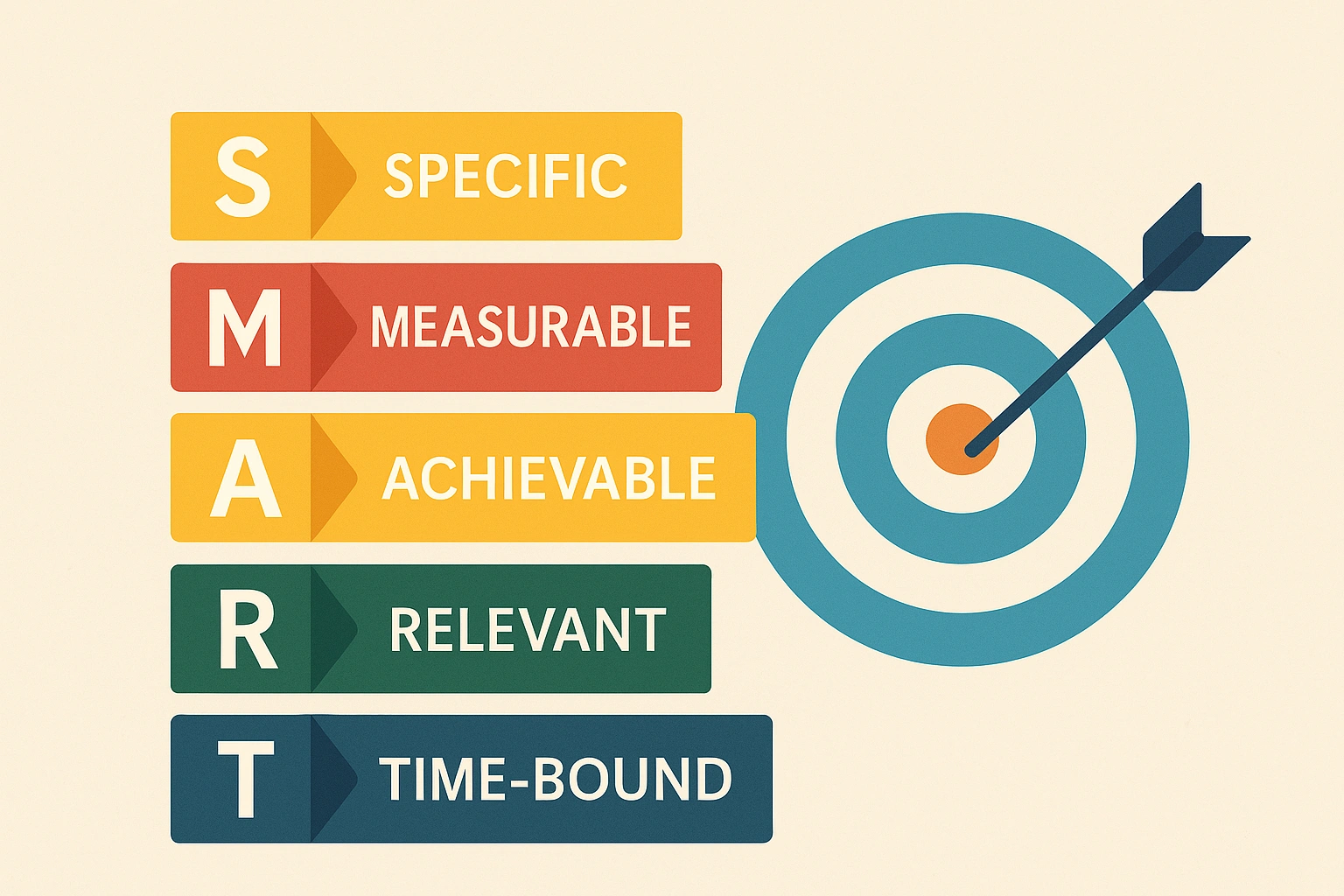How to Set SMART Goals for Personal Success
Introduction
In today’s fast-paced world, simply having goals is not enough. Many people set goals, but only a small percentage actually achieve them.
The reason often lies in how those goals are structured.
The SMART model is one of the most well-known scientific frameworks for transforming wishes into achievable goals.
Originally introduced by George T. Doran in 1981, it is now widely used in developmental psychology, coaching,
and performance management as a fundamental tool for designing a path toward personal and professional success.
The Meaning of SMART
The term SMART represents five essential characteristics that every effective goal should have:
| Letter | Meaning | Description |
|---|---|---|
| S | Specific | The goal should be clear and precise. |
| M | Measurable | Progress should be trackable and measurable. |
| A | Achievable | The goal should be realistic and attainable. |
| R | Relevant | The goal should align with your personal values and life direction. |
| T | Time-bound | The goal should have a clearly defined time frame. |
1. A Goal Must Be Specific
The human mind thrives on clarity. A vague goal like “I want to be successful” confuses the brain.
However, if you say, “I want to obtain my German B2 language certificate by the end of this year,”
you instantly clarify the path, the tools, and the motivation.
At this stage, answer five key questions: What? Why? Where? Who? and How?
2. A Goal Must Be Measurable
If you cannot measure your progress, you cannot manage it.
Measurable indicators allow you to see whether you are on track.
Instead of saying, “I want to get fit,” say: “I will run three times per week for 45 minutes over the next three months.”
Every small improvement then becomes a fresh source of motivation.
3. A Goal Must Be Achievable
Unrealistic goals are the enemy of motivation.
When the brain perceives a goal as impossible, it shuts down its motivational system.
Set your goal at the intersection of challenge and possibility — not so easy that it feels boring,
but not so hard that it leads to frustration or burnout.
4. A Goal Must Be Relevant
Many failures occur because goals are not aligned with a person’s core values.
For example, if your main value is freedom but your career goal locks you into a rigid corporate structure,
burnout is inevitable. A relevant goal serves as a bridge between outer desires and inner meaning.
5. A Goal Must Be Time-Bound
A deadline separates a dream from a real goal.
Without a clear time frame, the brain tends to procrastinate — a phenomenon known as structural procrastination.
Setting a deadline creates a sense of urgency and helps focus mental energy.
Your time frame should be realistic, predictable, and include checkpoints for review.
How to Apply the SMART Model in Your Personal Life
Step 1: Self-Awareness of Values
Before setting goals, understand why they matter to you. Ask yourself:
“What need will this goal fulfill?”
“Is this goal aligned with my authentic values?”
Step 2: Break the Goal into Smaller Steps
The human brain works better with immediate rewards.
Divide big goals into smaller milestones to experience continuous progress and satisfaction.
Step 3: Record and Track Progress
Writing down your goals moves them from the mind into reality.
Use a journal or a goal-tracking app to document your progress regularly.
Step 4: Review and Adjust
Goals are living entities; they need to evolve with changing circumstances.
Review your goals monthly — are they still relevant? Do they need adjustment?
Example of a SMART Goal
Vague Goal: I want to live a healthier life.
SMART Goal: I want to lose 5 kilograms within the next three months by maintaining a balanced diet (2,000 calories per day)
and exercising three times a week, so I can have more energy and focus in my daily life.
Common Mistakes in Goal Setting
- Setting goals based on others’ expectations rather than personal values
- Lacking measurable criteria for progress
- Setting too many or conflicting goals
- Ignoring emotions and intrinsic motivation
- Failing to document and review goals regularly
Conclusion
The SMART model is not merely a management tool — it is a mental roadmap for conscious growth.
Through this model, any desire can move from imagination to reality — provided it emerges from your true values and
is pursued with commitment, consistency, and reflection.
Ultimately, personal success means creating a more aware, mature, and balanced version of yourself along the way.







